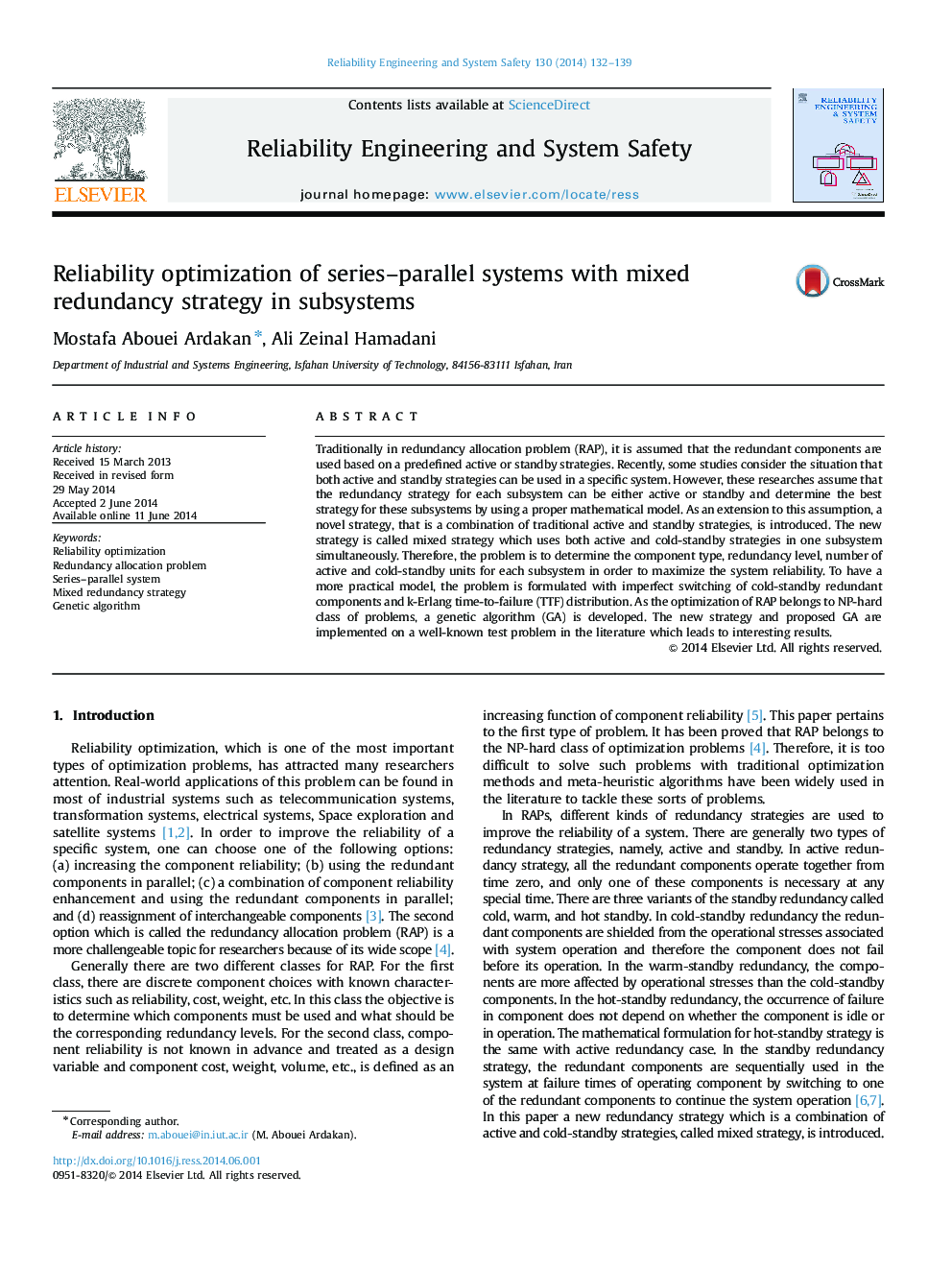| Article ID | Journal | Published Year | Pages | File Type |
|---|---|---|---|---|
| 807929 | Reliability Engineering & System Safety | 2014 | 8 Pages |
•In this paper the redundancy allocation problem (RAP) for a series–parallel system is considered.•Traditionally there are two main strategies for redundant component namely active and standby.•In this paper a new redundancy strategy which is called “Mixed” redundancy strategy is introduced.•Computational experiments demonstrate that implementing the new strategy lead to interesting results.
Traditionally in redundancy allocation problem (RAP), it is assumed that the redundant components are used based on a predefined active or standby strategies. Recently, some studies consider the situation that both active and standby strategies can be used in a specific system. However, these researches assume that the redundancy strategy for each subsystem can be either active or standby and determine the best strategy for these subsystems by using a proper mathematical model. As an extension to this assumption, a novel strategy, that is a combination of traditional active and standby strategies, is introduced. The new strategy is called mixed strategy which uses both active and cold-standby strategies in one subsystem simultaneously. Therefore, the problem is to determine the component type, redundancy level, number of active and cold-standby units for each subsystem in order to maximize the system reliability. To have a more practical model, the problem is formulated with imperfect switching of cold-standby redundant components and k-Erlang time-to-failure (TTF) distribution. As the optimization of RAP belongs to NP-hard class of problems, a genetic algorithm (GA) is developed. The new strategy and proposed GA are implemented on a well-known test problem in the literature which leads to interesting results.
